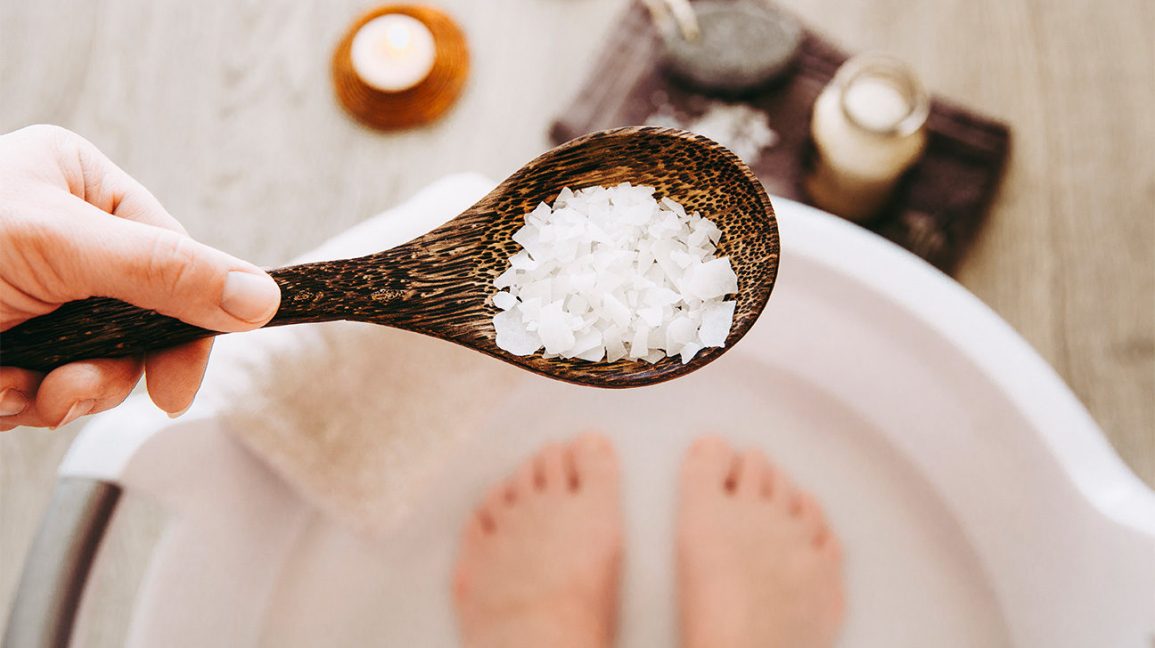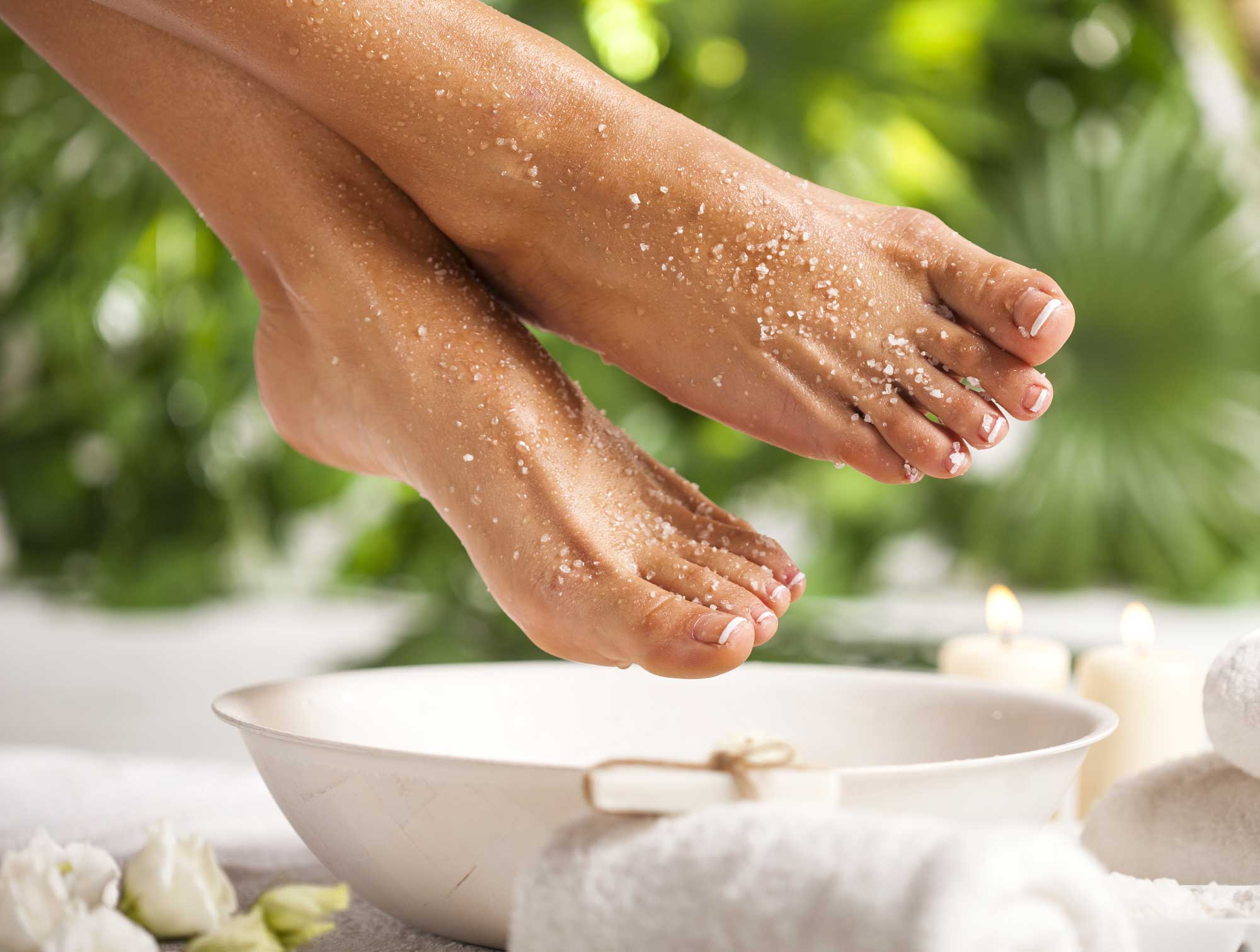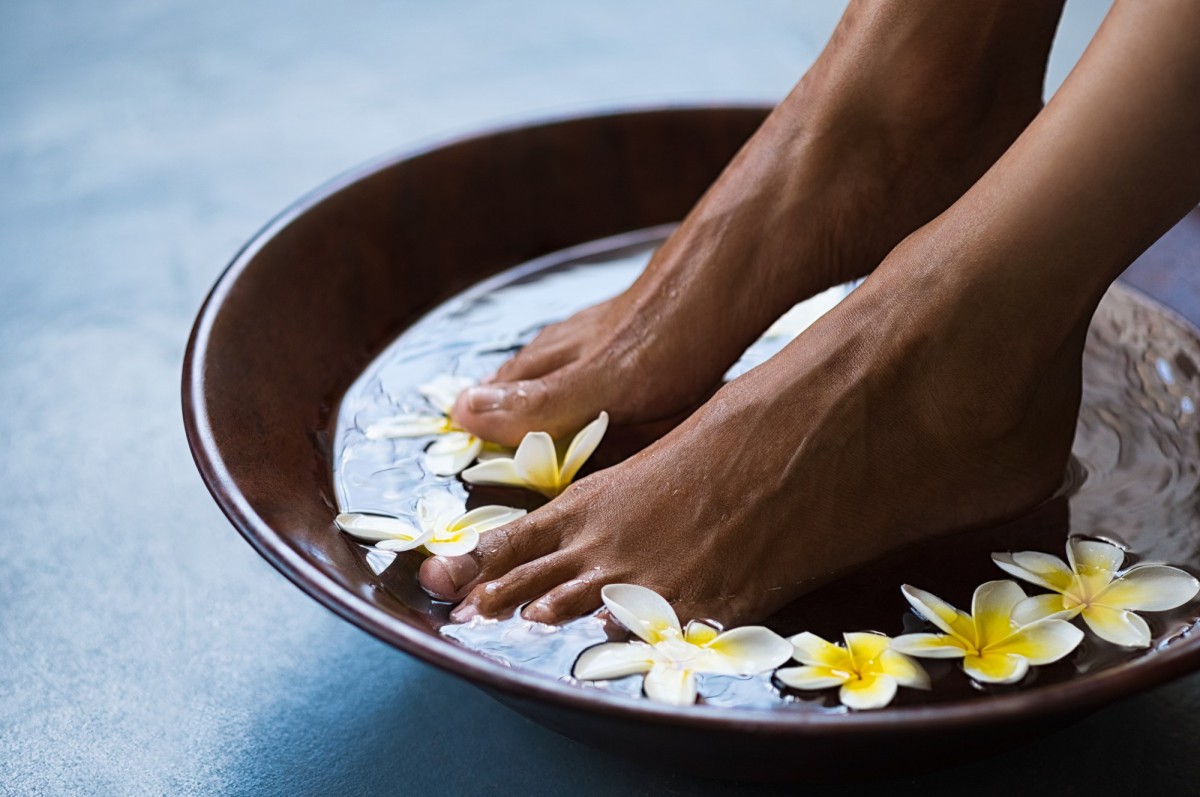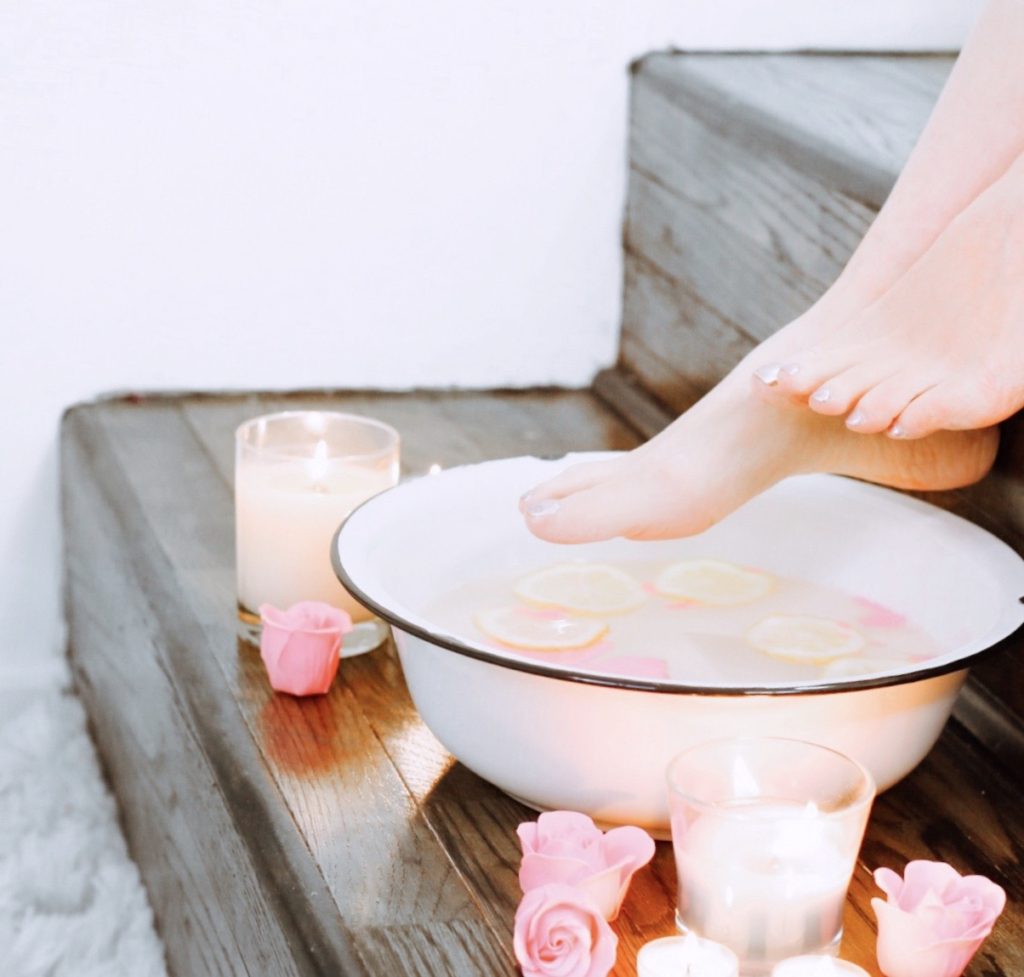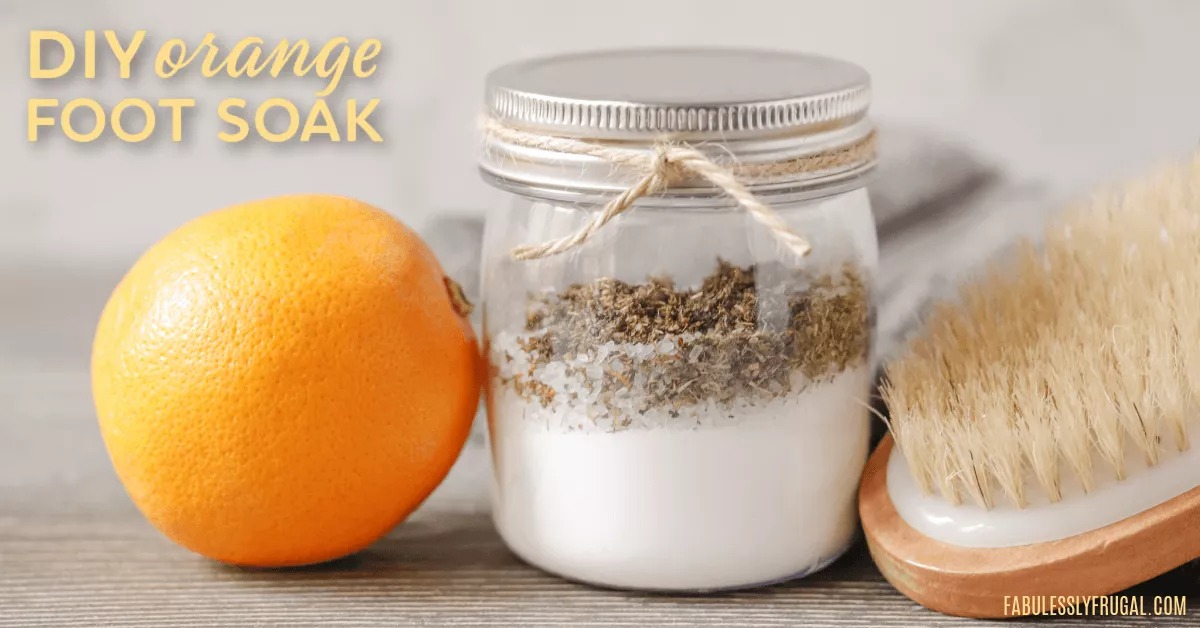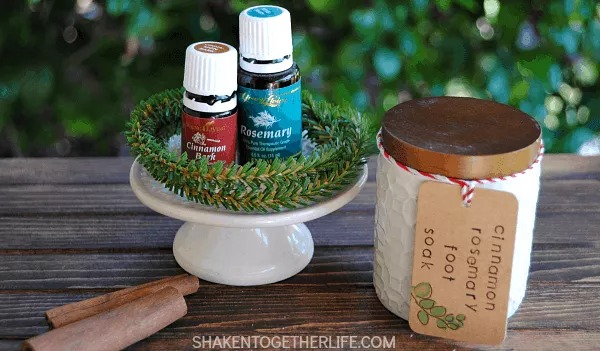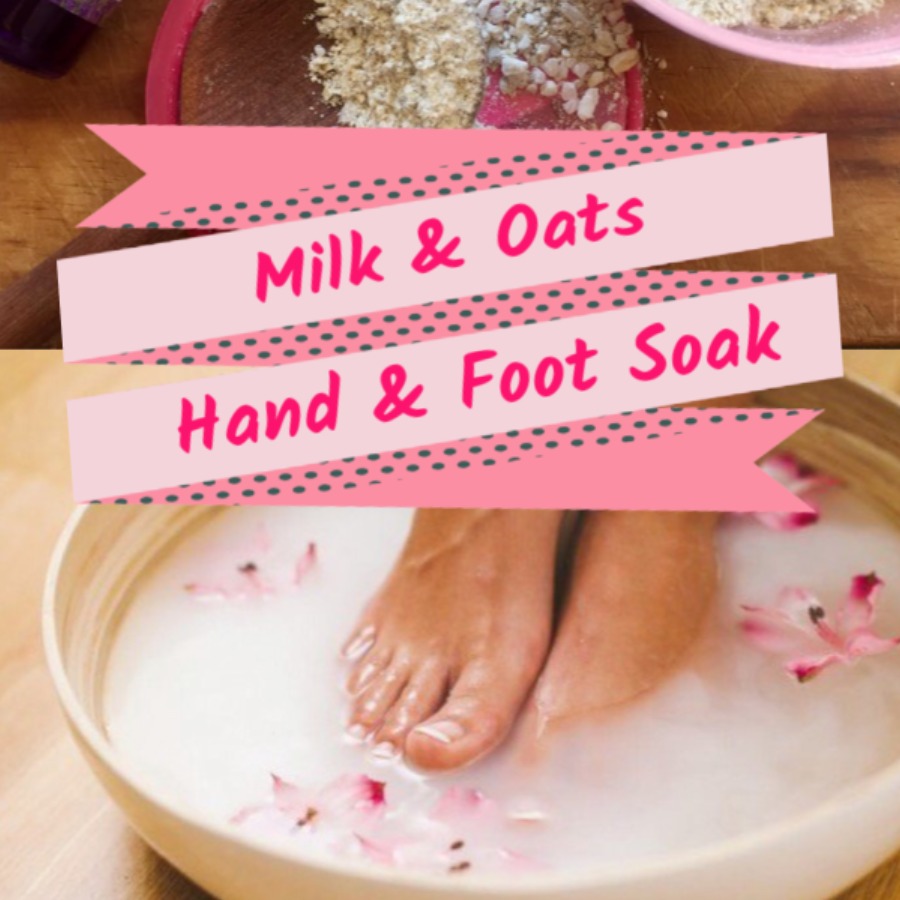A. Homemade Foot Soaks
An easy way to relax and unwind after a long day is to visit your home. This allows you to focus on your neglected legs that are working hard all day.
These DIY foot visor recipes are simple enough to put together in no time, but luxurious enough to make you feel like you have undergone a therapeutic spa treatment.
1. Primary care
a. To use the ideas below the footnote, follow these basics:
- Tub. For each soak, you’ll need a bathtub, large, shallow sink, or foot tub.
- Place a towel. bath mat, or dry towel very close to the towel.
- Time. Soak for 15 to 60 minutes.
- Hot water. When you are not using the bathtub, add some hot water to freshen up the water.
- Cold water. Finish each foot with cold water.
2. For the hips
Soaking this Epsom salt is a great option for days when your feet are soft, uncomfortable and asking for comfort. The magnesium in Epsom salts is absorbed through the skin and stimulates relaxation while relieving tension, pain and inflammation.
a. Soak your feet in your neck
- 1/2 cup of Epsom salt
- 5-20 essential oils of your choice such as peppermint, lavender or rosemary
- 6 tbsp. Carrier oil (alchemical)
b. How are you
- Dissolve the salt in a tub of hot water.
- Mix the essential oils and carrier oils.
- Pour the mixture into the bath.
3. For peeling
Soften dry, dead skin with this recipe. Epsom salt acts as a mild exfoliator and helps treat fungal infections and prevent foot odor.
a. Exfoliating foot soaking material
- 1-3 fresh lemons
- 1-3 cups of vinegar (white or apple cider)
- 3 cups of Epsom salt
b. How are you
- Add vinegar to a tub of warm water.
- Squeeze lemon juice.
- Use the toes to gently cleanse the toes and feet.
- Rub it on your feet using light circular motions before adding salt to the bath.
- Use a pumice stone, scrub brush, or washcloth to gently wipe away any excess dead skin after wetting your feet.
4. For better performance
Boost your blood circulation, relieve stagnation, and balance your body by soaking the vital legs of this body.
Research has shown that essential oils can promote blood circulation, decrease arousal, and improve mood, while hot water relieves inflammation.
a. Forced foot wetting material
- 1/2 cup of ground or freshly dissolved ginger
- Take 5-20 drops of essential oils of your choice like lemon, lemongrass, or clary lettuce
- 6 tbsp. Oil tankers
b. How are you
- Put the ginger in a bowl of boiling water.
- Gently pour it into the tub of water.
- Combine essential oils and carrier oils before adding them to the bath.
5. Moisten
Soft, smooth legs within easy reach. The moisturizing properties of honey and coconut milk make for a sweet treat.
a. Moisturizing foot moisturizing ingredients
- 1 cup of honey
- 1 cup of coconut milk
- 1 teaspoon. Cinnamon powder
b. How are you
- Dissolve the honey and coconut in a small bowl of boiling water.
- Carefully pour the mixture into a tub of water.
- Sprinkle cinnamon powder in water.
6. Keep the detox feet wet
In addition to the humorous evidence, many studies have not been conducted to support detox claims for footwetting even though they contain detox ingredients.
However, when you are ready to cleanse your own body, rotate a foot as it is unlikely to hurt. Keep it simple with these natural ingredients and avoid buying expensive products that promise harsh results.
Because the metal bentonite can reduce the effectiveness of clay, it should not be used to measure or mix the paste.
a. Soak detox foot ingredients
- 2 TBSP. Bentonite clay
- 2 TBSP. Apple Cider Vinegar
- 1/2 cup of Epsom salt
b. Steps to get your feet wet
- Mix the clay with the apple cider vinegar until you have a slightly thick consistency.
- Add more liquid or clay to get the right balance.
- Apply this paste to your feet for at least 10 minutes or until completely dry.
- Dissolve the salt in a tub of hot water.
- Once you’ve got your feet wet, let the clay naturally dissolve and loosen from your feet.
- Use an exfoliating brush, pumice stone, or washcloth to gently remove any excess material.
7. For relaxation and aromatherapy
If your ultimate goal is to relax and unwind, this recipe is just a ticket. According to a 2018 survey, adding essential oils to your wetness can help reduce stress and anxiety, and lead you to a more positive state of mind.
a. Ingredients of aromatherapy
- 2 TBSP. Oil tankers
- 5-20 drops of the desired essential oils
- 2 cups of Epsom salt
- 1/4 cup dried flowers like rose, chamomile, and lavender
b. Steps to get your feet wet
- In a large bowl, mix the carrier and essential oil.
- Add other ingredients to create a mixture.
- Gently mix the mixture in a tub of hot water.
- If you have leftovers, store them in airtight containers for up to 2 weeks.
8. After the party
Next, follow up on your favorite moisturizer.
- To relieve the pain, use gentle thumb pressure on a lotion and shake it over a thick layer of petroleum jelly or oil.
- Wear bed socks to help retain moisture.
- Before bed, raise your legs for at least 20 minutes.
a. Keep one foot wet too
Light a few candles or incense, play your favorite music, enjoy a book and your favorite hot beverage, or multitask with another thin treat like Facebook, mini manicure or hand massage.
- To take this step further, boil your feet to remove any dead skin.
- Even if the skin around your toenails is soft, you can still take the time to care for your toenails.
- When you’re ready, get your whole body engaged in a DIY body scrub.
9. Safety tips
a. Here are some security issues to consider:
- Make sure the water is the right temperature before submerging your feet.
- Avoid wet feet if you have open wounds, cuts, or ulcers on your feet.
- Don’t use a razor or scrap metal to remove dead skin.
- If you have very dry or sensitive skin, use a small amount of ingredients.
- Talk to your doctor if you are taking any medication or have health concerns.
Soak any loose vibes from the comfort of your home by soaking these DIY feet. These are easy and fun ways to sit back and always take a break from a world that is constantly moving and give yourself the attention you deserve.
B. Homemade Foot Soak for Dry Feet
Keeping your feet wet can soften dry skin when you are tired or have tired feet. Commercial foot baths are available, but they are often expensive and difficult to customize. By soaking your own homemade feet, you can change the concentration of the ingredients to make sure you get the most of it while reducing the risk of skin irritation from adding unnecessary chemicals or preservatives. Ask your doctor for advice if your dry skin is severe, or you have cracks or other symptoms.
Place an absorbent towel or pad on the floor that you want to get your feet wet. If water spreads when your feet are wet, damage to the floor or carpet will be avoided.
Fill the 1-second basin with hot water. The pelvis should be large enough to fit comfortably on both sides. If the basin is too heavy to fill right away, put it where you want it and fill it with a jug. The American Geriatrics Society recommends not using hot water as it can worsen dryness and cause tissue damage.
Add 1 cup of Epsom salt to hot water. Use your hands or a large plastic spoon to mix the water until the salt is completely dissolved.
If you suffer from dry skin and foot odor, mix 1 teaspoon of baking soda per liter of water. Soaking in baking soda not only soothes dry skin, but it also lowers your skin’s pH level so it’s less harmful to the bacteria responsible for foot odor, said Dr. Susan M. Levine, podiatrist at Mount Sinai Hospital.
Try using vegetable or essential oils to moisturize your skin and add fragrance to your feet. Skinhelp.comweek recommends pepper, aloe vera, chamomile, and fennel to help relieve dryness. Marthastworth.com recommends adding spearmint or lemon essential oil to the water to soothe tired feet.
Remove the feet from the foot bath after the water has cooled or after 20 minutes. If you experience dryness, itching, rash, or other symptoms, stop wetting your feet and consult your doctor.
Apply a moisturizing lotion to dry areas. Moisturize dry, rough, or itchy feet after wetting the feet. Severely dry skin can benefit from oil-based moisturizing ointments as they are more effective at keeping moisture in the skin.
After soaking, dry your feet well. This is especially important if you have tinnitus or athlete’s foot, as the fungi responsible for this condition grow in humid environments. Do not rub your skin dry as this can cause dryness and irritation. Instead, tap your feet with a soft towel.
According to MayoClinic.com, soaking your feet in a solution of two parts water in a piece of vinegar for 20 minutes every day can help combat toenail fungus and foot odor. Vinegar can dry out, but the concentration of vinegar or the frequency of your vasodilation should be decreased if you notice your condition getting worse or develop irritation.
C. 5 of the Best DIY Foot Soaks That You Can Do From Home
The legs have a lot of work! They surround us everywhere, they are stuffed into shoes, they are sometimes attacked, they go through a lot! If you can relate to any of the above issues, it’s time to give your feet a little more love! Don’t worry, you don’t have to spend your fortune. These inexpensive DIY foot moisturizers will help you relax and keep your feet softer, healthier and fresher.
Here are the top 5 homemade and DIY wet feet to invigorate your feet!
1. Soak homemade orange feet
This home has a combination of great ingredients to create a great relaxing and foot refreshing experience when your feet are wet. Baking soda helps soften your skin, Epsom salt helps clear out toxins, and the smell of orange citrus fruits is extremely sweet and heightened.
a. Materials:
- 1/3 cup baking soda
- 1/2 cup of Epsom salt
- 2 orange tea bags
- 5 drops of jojoba oil or orange oil
- Orange pieces for decoration
b. Manual:
- Mix all of the ingredients together and store in a container like an 8-ounce mason jar.
- Put 3 tablespoons in a large saucepan with hot water to enjoy
2. Wet DIY clay feet
Wetting these feet helps remove toxins from your body because they contain bentonite clay. This soil expands in the water and attracts, absorbs and traps toxins. Other ingredients in this recipe will help soften your skin and make it more detoxified.
a. Materials:
- 2 tablespoons of bentonite clay
- 1 tablespoon apple cider vinegar
- Water from diluted mixture (if necessary)
- 1/2 cup of Epsom salt
- 6 liters of hot water (or enough to fill your container)
- A few drops of essential oil (alchemical)
3. Soak the feet in Listerine and vinegar
Listerine and vinegar may seem like a somewhat strange combination for wetting a DIY foot, but both ingredients have some great benefits for your feet. First, Listerin can help kill athlete’s foot, which means you can say goodbye to smelly feet. Second, the acid in vinegar makes it easy to remove dead skin to soften your skin. Your feet will feel soft and fresh!
a. Materials:
- 1 cup of Listerine
- 1 cup of vinegar
- Cover the top with warm water feet
4. Homemade Peppermint Foot Soak Scrub Recipe
If you want a fresh and cool feeling for your feet, these homemade peppermint feet are perfect. Wetting these feet also has great healing effects. It is suitable for chapped, sore and dry feet! You can also replace any oil of your choice like lavender with peppermint essential oil.
a. Materials:
- 1 cup of Epsom salt
- 1/4 cup baking soda
- 2 tablespoons of coconut oil
- 5 drops of essential oil with black pepper
5. Soak the cinnamon and rosemary feet
These two ingredient DIY feet soaked recipes are great for aching feet. When you meet someone who gets noticed most of the day it would be a great gift to get!
a. Materials:
- Ipsom 1/3 cup salt
- Each cinnamon bark and rosemary essential oils 3-4 drops
All you have to do to keep these DIY feet wet is a water pan to soak your feet in. However, if you really want to get into a slightly higher position in home treatment, invest in a foot bath. Most foot baths have additional features like massagers, jets, hits, etc.
D. Are There Any Benefits to Soaking Your Feet in Listerine?
1. Listerine for the legs?
Soaking a listerine foot is like sitting in a room and taking a bath. It is mainly used to treat athlete’s foot and onychomycosis (twin fungus). People also use listerin on their feet to remove dead skin.
Listerine, which is commonly used to prevent tooth decay and gingivitis, contains many active ingredients. When it comes to feet, this type of wash is not used to combat odors, but because of the antifungal properties of menthol and thyme.
a. Below are step-by-step instructions for wetting Listerine feet:
- Find a tub that fits the length and depth of your feet. While a foot bath works well, any deep tub can work.
- Fill the jar with two tablespoons of warm water and listerine. You will need enough to cover your entire leg.
- Instead of water, you can mix equal parts of white vinegar. It is believed that this type of vinegar can get rid of the fungus due to its high acidity.
- Soak your feet in the solution for 45 to 60 minutes at a time.
- Soak a listerine foot daily and use it until the fungus is clean.
2. Preventive measure.
If you are short on time, you can apply Listerin with a cotton ball twice a day.
Patience is key to using listerin on mushrooms. With a prescription antifungal, it can take several months for the fungus to completely clear. However, you can immediately see significant improvements.
3. Research and Evidence
Although the ingredients in listerine are believed to have antifungal properties, no study has proven that mouthwash is a safe way to get rid of foot and nail fungus.
A study from a trusted source found that listerine can prevent fungal infections in people with autoimmune diseases. However, the study focused more on oral fungal infections.
The powerful antifungal and antibacterial properties of Listerin are obvious – as a mouthwash. Clinical trials are needed to support listerine as an alternative treatment for athlete’s foot.
4. Caution and consideration
While Listerine is relatively safe for wet feet, they may not be suitable for everyone. If you have sensitive skin it can cause mild irritation. Before fully soaking, examine a small area of skin with listerine (and vinegar if you plan to use it to wet it). Wait a few hours after applying the sample to see if you have any reactions.
If you have athlete’s foot, wetting that foot and using it alone will not prevent the condition from returning. Make sure to keep your feet dry and bathe regularly. Changing socks often helps with long-term activities. Your feet sweat a lot, but you can also use a spray or powder every day to keep your feet dry.
Trimming your nails can also help prevent yeast infections on your feet. Once you’ve grown thumbnails, avoid using listerine as it can irritate the area. You may want to remove the adult nail your doctor gave you to prevent infection.
5. Bottom line
Soaking Listerine feet for feet and tannin mushrooms can be an alternative remedy to use at home. Overall, this procedure has no serious risks and side effects. However, check with a pediatrician first before soaking these baby feet.
Still, there isn’t enough evidence to support listerine as a reliable treatment for athlete’s foot. You should see your doctor if the fungal infection in your feet and toenails doesn’t improve even after using a home remedy like Listerine. Some nail infections can be more serious complications, especially if you have diabetes or other underlying medical conditions.


